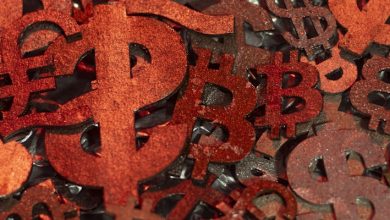The Impact of Staking Rewards on Token Value

- Understanding the relationship between staking rewards and token value
- Exploring the economic implications of staking rewards on token prices
- Analyzing the impact of staking rewards on investor behavior
- Comparing the effects of staking rewards on different types of tokens
- Strategies for maximizing staking rewards to increase token value
- The future of staking rewards and its potential influence on the cryptocurrency market
Understanding the relationship between staking rewards and token value
Understanding the relationship between staking rewards and token value is crucial for investors looking to maximize their returns in the cryptocurrency market. When a blockchain network offers staking rewards to token holders, it incentivizes them to hold onto their tokens rather than sell them. This can create scarcity in the market, driving up the token value.
Staking rewards are typically distributed to token holders based on the amount of tokens they hold and the duration of time they are willing to lock them up for staking. The higher the staking rewards, the more attractive it becomes for investors to stake their tokens, which can lead to an increase in demand for the token.
As more investors stake their tokens, the circulating supply of the token decreases, which can have a positive impact on the token value. This is because a lower supply of tokens in the market can create a sense of scarcity, making the token more valuable to potential buyers.
Exploring the economic implications of staking rewards on token prices
The economic implications of staking rewards on token prices can have a significant impact on the overall value of a cryptocurrency. When users stake their tokens, they are essentially locking them up in a smart contract in exchange for rewards. These staking rewards are often paid out in the form of additional tokens, providing an incentive for users to hold onto their tokens rather than selling them on the open market.
One of the key ways in which staking rewards can influence token prices is by reducing the available supply of tokens on the market. As more users stake their tokens and take them out of circulation, the scarcity of the token increases, driving up demand and potentially pushing the price higher. This can create a positive feedback loop, where higher token prices lead to more users staking their tokens, further reducing supply and driving prices even higher.
Additionally, staking rewards can also have a stabilizing effect on token prices. By incentivizing users to hold onto their tokens for a longer period of time, staking rewards can help reduce the volatility of the token and create a more stable price floor. This can make the token more attractive to investors and increase overall confidence in the project.
However, it’s important to note that staking rewards are not a guaranteed way to increase the value of a token. The success of a staking program depends on a variety of factors, including the overall health of the project, the size of the staking rewards, and the level of participation from users. If these factors are not carefully managed, a staking program could end up having a negative impact on token prices, leading to a decrease in value for holders.
In conclusion, the economic implications of staking rewards on token prices are complex and multifaceted. While staking rewards can potentially increase the value of a token by reducing supply and creating stability, they also come with risks that need to be carefully considered. By understanding the dynamics of staking rewards and their impact on token prices, investors can make more informed decisions about whether or not to participate in a staking program.
Analyzing the impact of staking rewards on investor behavior
Investors are increasingly drawn to staking rewards as a way to earn passive income on their cryptocurrency holdings. The promise of receiving additional tokens simply by holding onto their investment has a significant impact on investor behavior. By offering staking rewards, projects incentivize investors to take a long-term approach, rather than engaging in short-term trading. This shift can lead to greater stability in token value, as fewer investors are looking to make quick profits and instead are focused on earning rewards over time. Additionally, staking rewards can create a sense of loyalty among investors, as they become more engaged with the project and its community. This increased engagement can lead to a more dedicated investor base, further supporting the token value in the long run.
Comparing the effects of staking rewards on different types of tokens
When comparing the effects of staking rewards on various types of tokens, it is important to consider how different token structures can impact the overall value proposition for investors. Tokens that offer staking rewards can provide holders with additional incentives to hold onto their tokens for a longer period of time. This can help to increase demand for the token, which in turn can drive up the price.
One key factor to consider when evaluating the impact of staking rewards on token value is the type of token being staked. For example, some tokens may offer higher staking rewards than others, which can make them more attractive to investors looking to maximize their returns. Additionally, tokens that have a limited supply may see a greater increase in value as a result of staking rewards, as the scarcity of the token can help to drive up demand.
Furthermore, the network on which a token is staked can also play a role in determining the overall impact of staking rewards on token value. Networks that have a larger user base and more active participants may see a greater increase in demand for staked tokens, as there is a larger pool of users who are actively staking their tokens.
Strategies for maximizing staking rewards to increase token value
Maximizing staking rewards is crucial for increasing the value of your token holdings. There are several strategies you can implement to optimize your staking rewards and ultimately boost the value of your tokens. Here are some key tactics to consider:
- Diversification: Staking your tokens across multiple platforms can help mitigate risk and maximize your overall rewards. By spreading your staking holdings, you can take advantage of different reward structures and capitalize on the best opportunities available.
- Compound Interest: Reinvesting your staking rewards back into your staking pool can accelerate the growth of your holdings. By allowing your rewards to compound over time, you can significantly increase the overall value of your token portfolio.
- Regular Monitoring: Keeping a close eye on your staking performance is essential for optimizing your rewards. By monitoring the market conditions, reward rates, and network upgrades, you can make informed decisions to maximize your staking returns.
- Staking Pools: Joining a staking pool can be a strategic way to increase your rewards without having to manage your staking activities actively. By pooling your resources with other token holders, you can benefit from shared rewards and reduce the time and effort required for staking.
- Long-Term Perspective: Staking rewards can fluctuate over time, so it’s essential to take a long-term view when optimizing your staking strategy. By focusing on the overall growth potential of your tokens and staying committed to your staking plan, you can maximize your rewards and increase the value of your holdings.
By implementing these strategies and staying informed about market trends and developments, you can effectively maximize your staking rewards and enhance the value of your token investments. Remember that staking is a powerful tool for generating passive income and growing your cryptocurrency holdings, so it’s worth taking the time to develop a robust staking strategy that aligns with your investment goals.
The future of staking rewards and its potential influence on the cryptocurrency market
Looking ahead, the future of staking rewards holds significant potential to influence the cryptocurrency market in various ways. As more investors and users participate in staking activities, the demand for tokens needed for staking will likely increase. This uptick in demand could lead to a scarcity of tokens available for trading, potentially driving up the token value.
Furthermore, the distribution of staking rewards can also impact the overall token value. If a significant portion of rewards is distributed to stakers, it could incentivize more users to hold onto their tokens rather than sell them. This reduced selling pressure could contribute to a more stable token price and even lead to price appreciation over time.
Additionally, the potential for higher staking rewards may attract more participants to the network, thereby increasing network security and decentralization. A more secure and decentralized network is often viewed positively by investors and can contribute to a positive perception of the token and its value.



